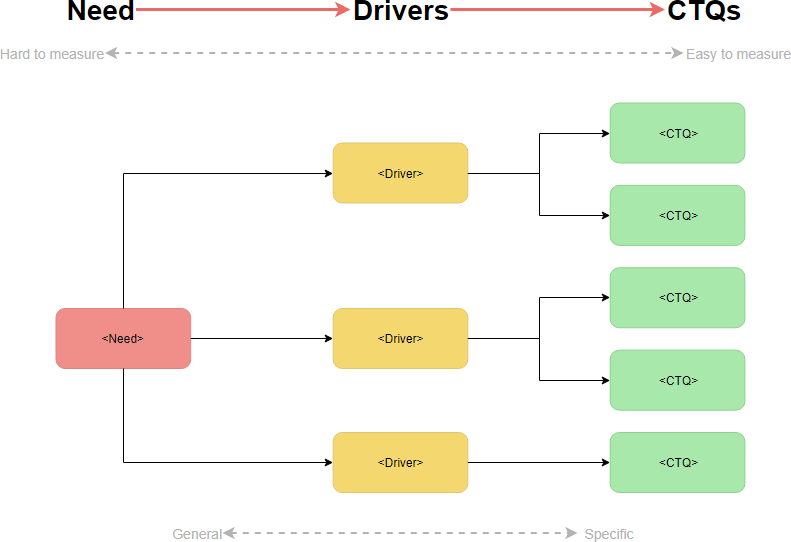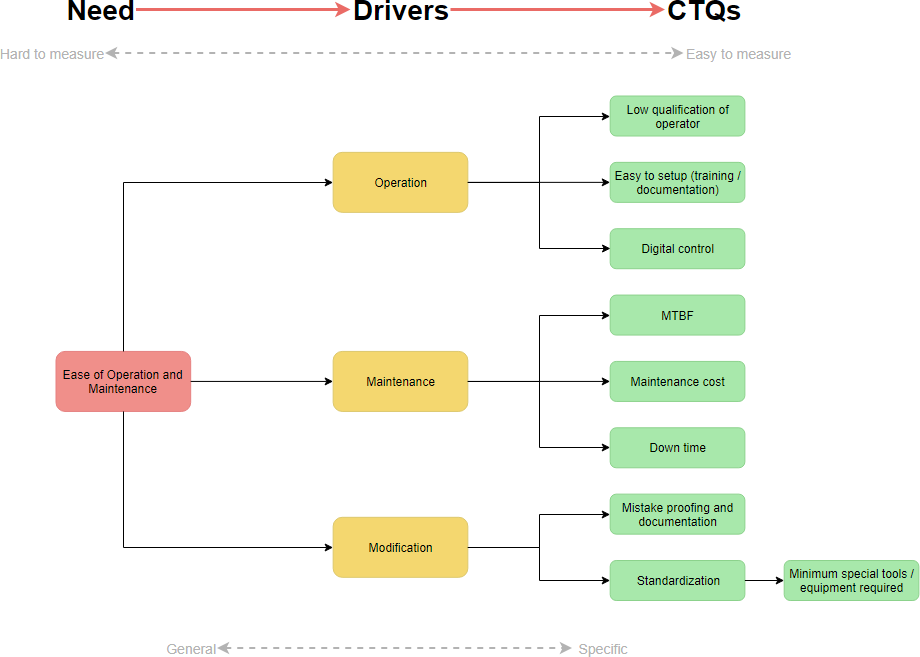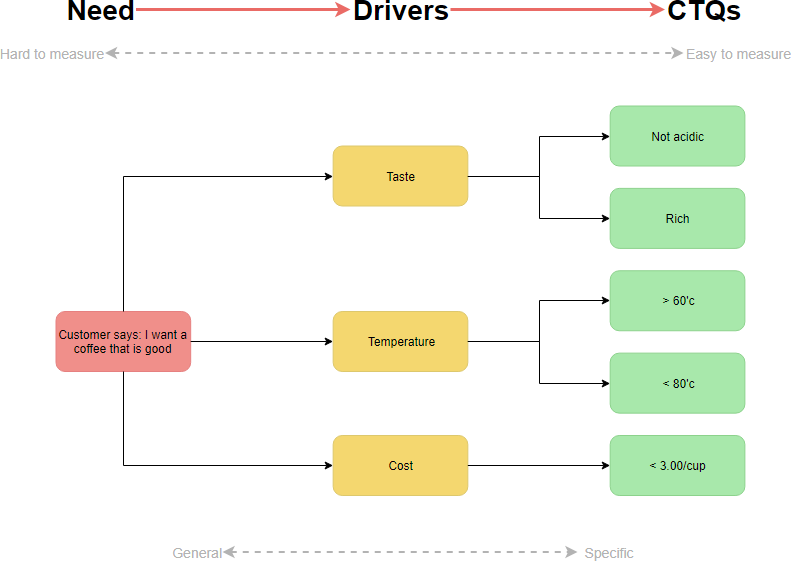The critical to quality trees (also known as customer requirement trees) are the key measurable characteristics of a product or process whose performance standards or specification limits must be met to satisfy the customer, i.e. A Car door sound when closing might be a CTQ tree, while the dimensional tolerances and cushioning needed to produce those conditions are CTQ’s for the automaker.
CTQ trees are often used as part of a six sigma methodology to help the manufacturer to provide superior quality products to customers. In short, the CTQ Tree is a simple tool to tell you exactly what your customer wants.
CTQ trees are very helpful in this regard as they define quality from the customer’s point of view. A most excellent approach is to design a CTQ tree for every singular need, as it results in a thorough and complete list of demands and requirements that are required to provide a superior quality product for customer satisfaction.
In this article, we will review a CTQ tree example and explain how it can improve your business.
Benefits of CTQ
- CTQ helps to identify the solitary needs of the individual client and recognize measurable performance requirements needed for specific client’s satisfaction.
- CTQ highlights any weak areas in an organization where performance is below standard and helps in root cause analysis.
- CTQ helps in the quality improvement of a product or service.
Components of A CTQ Tree
CTQ tree is build up with the following three main components to ensure you get a useful level of detail.
Need: It highlights the customer requirements and it is the origin of a CTQ tree. For example, for a fast-food restaurant, customer’s need is fast food.
- What does your customer need?
- What does your product have to do or give them?
Driver: Drivers are the parameters on which a customer judges the quality of the product.
- What’s important to the customer to satisfy their needs?
- What qualities are important regarding the customer to need?
Requirements: These are the measurable performance standards that have to be met by drivers to satisfy customers. It helps the business to measure the quality of a product and/or service that has met the client’s demands.

CTQ Tree Example
Whenever someone visits a pizza shop, all they want is to have an amazing experience and be a satisfied customer. For this, there are a few drivers that may be. To make things understandable, let us take a CTQ tree example of a pizza shop, the team identified several drives:
- Quality is a driver that is measured by appearance, temperature, and taste of the pizza.
- Speed is measured by how quickly the pizza gets to the table, and the variety is measured simply by the number of available toppings and combinations.
- Price includes regular price and promotion deals
The above drivers for which the owners have to meet customer’s requirements to have a satisfied customer. Below is a CTQ tree example diagram. In this way, it gives us a clear understanding of what requirements need to be met for customer satisfaction.

CTQ Tree Example – I Want a Cup of Good Coffee
Choose important customer requirements and run it through the Customer Requirements Tree.
- Begin with a very basic customer requirement such as “I want a coffee that is good”.
- Start by establishing the drivers – what the customer might use to decide on what makes a good coffee.
- Then define your requirement some of them are qualitative, while most of the others could be quantitative, i.e. an upper and lower limit for each driver – these are your critical-to-quality requirements.
